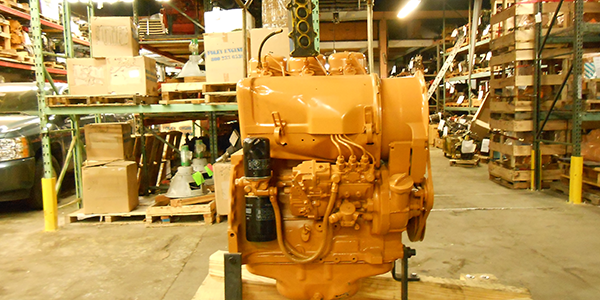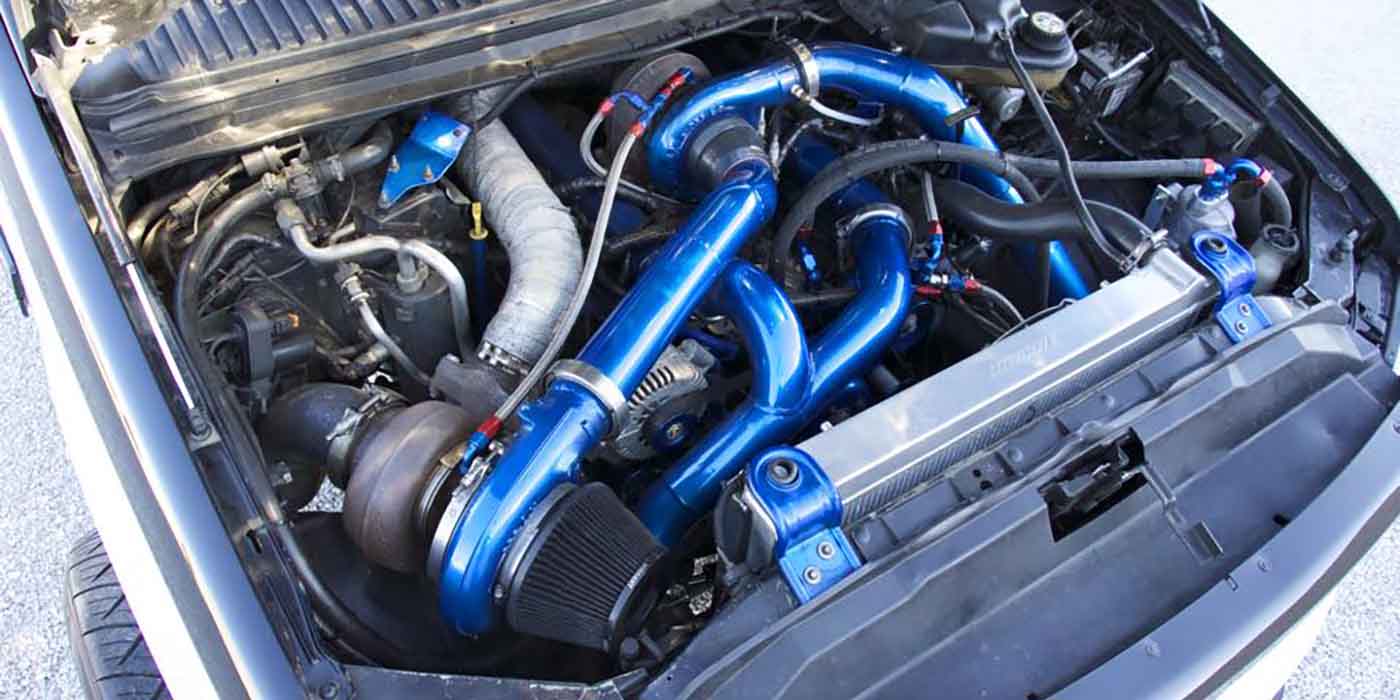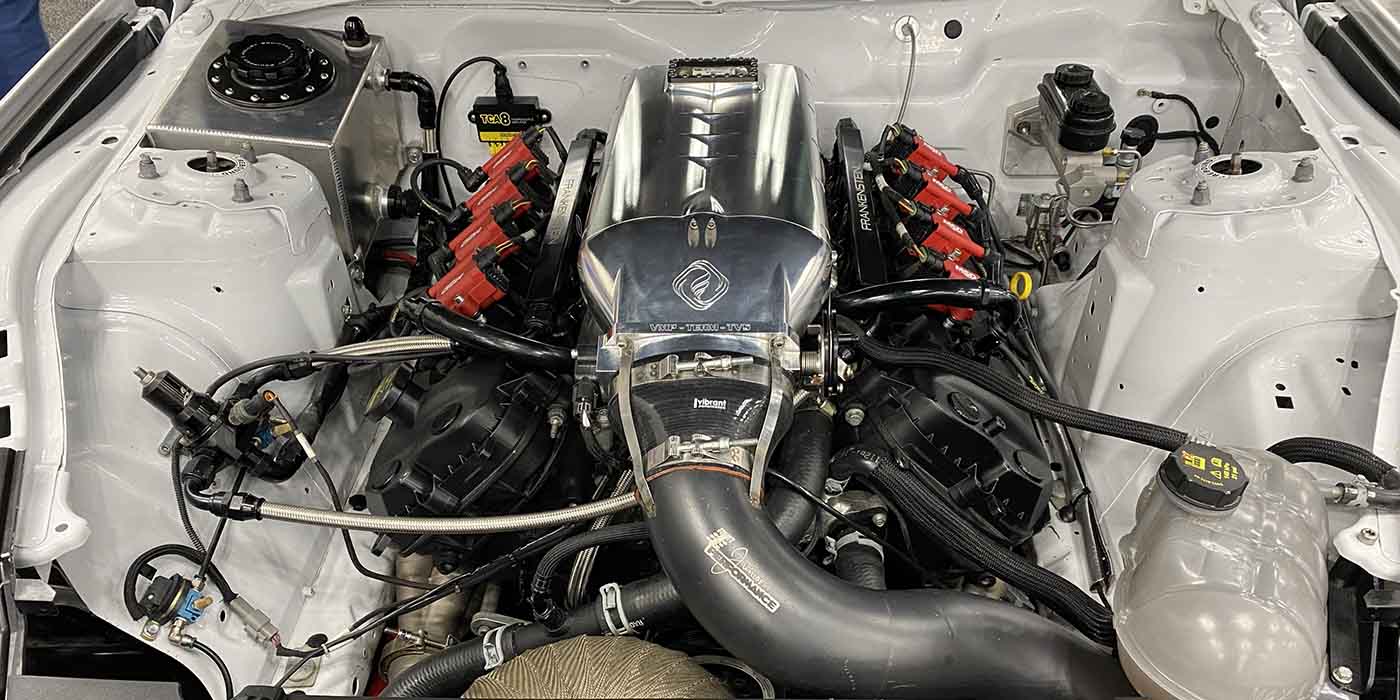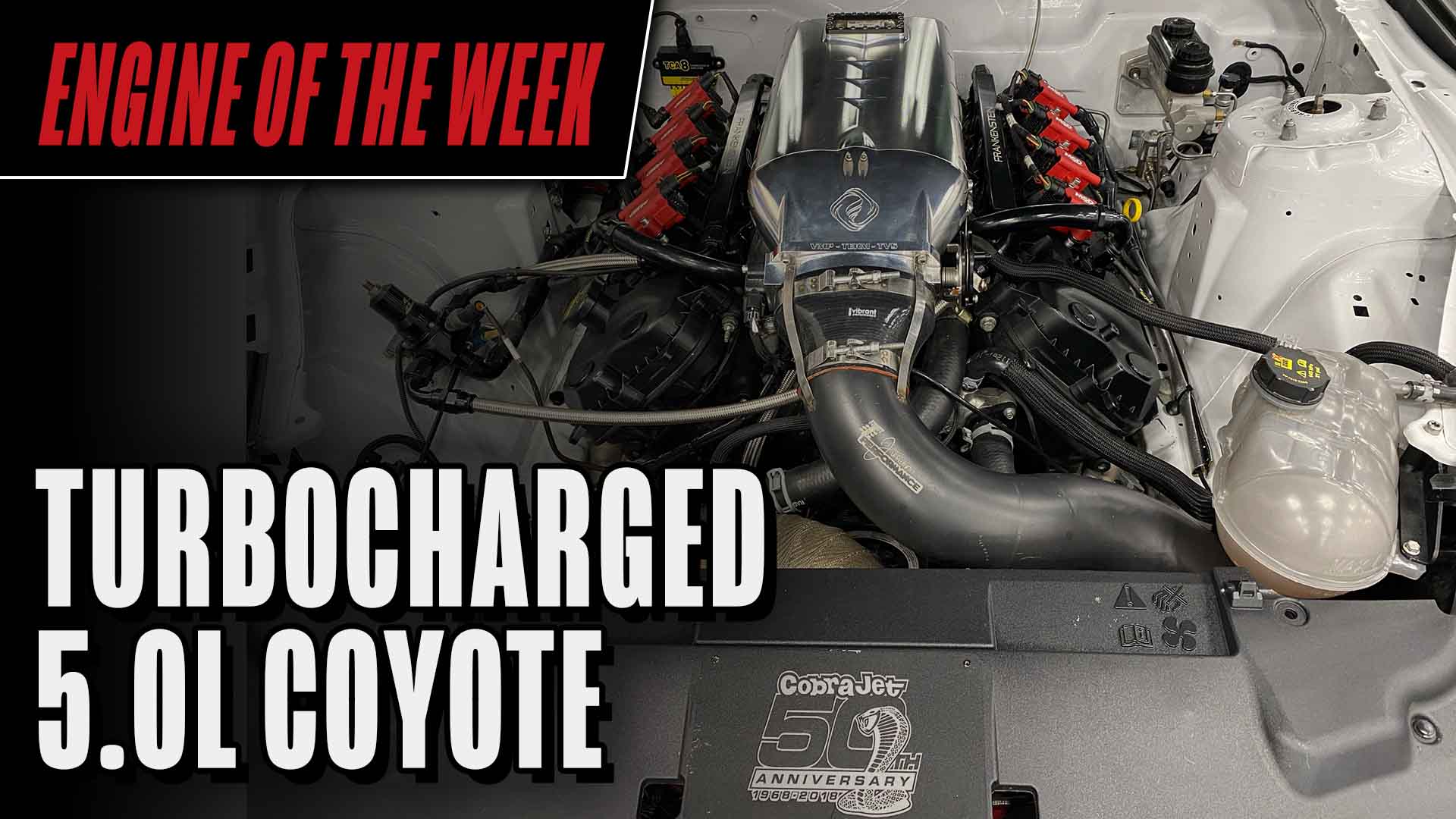Rebuilding industrial engines is a growing business for many engine builders and shows no signs of slowing down. For those willing to make a small investment, it is a relatively easy field to get into as the traditional small block Chevrolet market goes the way of the buggy whip. But let’s start at the beginning.
A Little History
After WWII, the very first industrial engines were mainly Chrysler and Ford automotive engines that were dressed out for industrial applications by adding a governor and offering a variety of oil pans. Rebuilding these gas engines was easy. They were heavy, slow-turning, low compression engines that often had simple flat head designs. These engines were assembled with very easy to machine, heavy, cast iron components. They were parent bore (un-sleeved) engines, so the engine builder would simply bore the cylinders to an oversize (usually the maximum was .060˝ over) and polish or grind the crankshaft.
Most people knew where to look with the naked eye for any casting issues. The Continental flathead engine, for example, was known to crack in the valve seat area and the crack could extend down into the bore. Few people had or used magnaflux machines. The few people who even bothered with subsurface crack detection used inexpensive hand-held machines. If the block was cracked the builder could simply press in a repair sleeve and then bore that out to whatever size he wanted. There was not much need for tech specs including torque values or valve settings. The aftermarket parts manufacturers supplied adequate technical information in the very thick and lavish catalogs they gave out free of charge in those pre-internet days.
At the same time, there were very few industrial diesel engines. Detroit Diesel with its modular 53 and 71 Series engines were by far the most common industrial diesel engines. In fact, the slogan of that era was that the Detroit 671 engine, “old reliable,” in all of its many configurations, had won WWII for us. Many engine builders made a good living just rebuilding “Deee-troits” or “Jimmys” as they were called. They were heavy, cast iron, sleeved engines, and installing new liner kits was easily done.
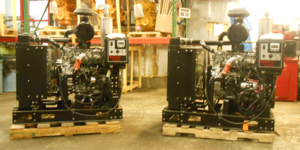
Allis Chalmers and Minneapolis Moline were two other diesels that were prominent. There were few, if any, small industrial engines. All-in-all, Detroit Diesel ruled and rebuild parts were by and large strictly OEM. The aftermarket diesel parts business had yet to take off.
Modern Industrial Engines
As America entered the 1960s, the suburbs were growing, the economy was booming and people had money to spend on labor saving devices. As a result, consumers and professionals alike were looking for more and more engine powered equipment (usually under 100 hp). But the then-available industrial engines were too big and too heavy. No one today would consider putting a noisy, smoke belching, two-stroke Detroit Diesel into a piece of mobile equipment.
Melroe Bobcat Company of Fargo, ND is a good example of those times. They saw a need to help farmers to clean out their barns. Even the smallest front-end loader of the time, a Michigan 55A loader, was too big to easily get into a dairy farmer’s barn. Bobcat addressed this need and manufactured small and nimble skid steer loaders that could easily get into a barn. The very first model Bobcat used a small Wisconsin gas engine. Subsequent larger models used Deutz, Perkins, Kubota and other engines. The name “Bobcat” has since become synonymous with all brands of skid steer loaders.
Another example is the wood chipper market. The earliest wood chippers used very large Ford V8s. The wood chipper duty cycle was such that big V8s spend most of the time idling away. As a result, they burned huge amounts of gas. Later, many wood chippers were powered by Perkins, some of which were branded by Caterpillar and are called Perki-pillars, Deutz and other small, efficient diesels. Diesels are adiabatic engines with great fuel economy when not running under load and just idling.
During the last 30 years, the number of industrial engines has multiplied with Cummins B Series, Mitsubishi, Toyota, Hatz, John Deere, Yanmar and many others making industrial engines.
This is an attractive field for an engine rebuilder to get into. Small diesels are far more complex than automotive engines, the job is time-sensitive and, as a result, they are less price-sensitive. In other words, they offer good profit making opportunities. To get into this field, a rebuilder may need to up his game a little with modern machine tools, a skilled parts person and develop alliances with suppliers.
Machine Tools
If you have been out of the engine rebuilding equipment market for a while, you may need to re-evaluate what you have in machine tools. These new industrial engines tend to be lightweight. Crack detection and pressure testing is important. You will need access to a magnaflux machine. The very best are, of course, the large, fixed machines that a crankshaft grinder might have. If worse comes to worse, a $300 handheld magnaflux unit should do the job for you. You should also be prepared to pressure test the cylinder heads.
Resurfacing the head to a specified Ra finish is important. You can’t tie the cylinder head to the back bumper of your shop truck and drag it down the street as some people used to do to resurface a F227 Continental flathead. A platen grinder won’t give you this finish either, which is necessary to hold the head gasket. A decent used head and block resurfacing machine with tooling will set you back $10,000 to $15,000.
While a used modern valve seat and guide machine will be a little less expensive than a new unit, make sure it is fully tooled. Adequate tooling for a valve seat and guide machine can easily total the cost of a used machine with no tooling. A good seat and guide machine will separate you from the shop that is just limping along with old machine tools until the owner can collect his social security and retire. In other words, good equipment will be a differentiator for you from your competition and is something you can advertise and be proud to show to customers.
Identifying the Correct Parts
Your parts person should have some computer skills to track down the correct parts and specs. In this internet age, no one is publishing 200-page parts catalogs to hand out for free at automotive builder trade shows. The best sources of tech specs and parts information are the AERA’s PROSIS system and engine manufacturer computer-based parts lookups such as the Deutz SERPIC system. Neither one though is 100% bulletproof.
Sourcing parts on the internet can be an iffy proposition. The internet parts vendors, often one-man companies, tend not to stock any parts but drop-ship them sight unseen from warehouses. Because of this, returning misidentified parts to them for a credit can be a nightmare. They will usually not issue a credit for wrong parts until the warehouse they bought them from issues them a credit. This could take many weeks. Better to buy direct and stick with an engine company with some decades of experience who stocks the parts you need. If worse comes to worse, a stocking distributor can always go to his shelves, get the actual part in his hand, and ship it to you that day. A real plus would be if your industrial parts warehouse also ran an active shop. They would then have the experience to offer you several alternatives.
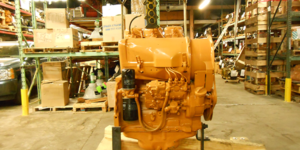
Ordering a workshop manual is a good first move if your customer brings in an engine you are not used to. When you order a workshop manual from an engine distributor, be aware that they will ask you for not only the model number of the engine (e.g. John Deere 4039) but also for either the engine serial number or the engine specification number. They will ask for this info because there can be a tremendous variation in tech specs among serial numbers or engine specification numbers. For example, a Deutz engine with the suffix W at the end of the model indicates that the engine is certified to be used underground. Almost all of the internal parts are different in the mine-certified engine from conventional Deutz engines. The Perkins 4.154, depending upon serial number, was either made in Japan or the UK and the parts are not interchangeable.
Identifying the rebuild parts you need has been made more difficult because of ever increasing emissions regulations. It used to be that once you had an engine model identified, e.g. Perkins Model 4.236 engine, the only significant variations were in the sleeves (straight, flanged, and flanged with a fire ring), the fuel (gas or diesel), and rear crankshaft seal (lip or rope). Now with increasingly stringent emissions regulation there has been a proliferation of Perkins engines that replaced the Perkins 4.236. These are known as the Perkins 1000 Series and later as the Perkins 1100 Series.
The Perkins 1000 Series has models AA through AQ. Some are sleeved engines, some are parent bore engines, which take oversize pistons when worn. Some have fractured connecting rods and some have serrated rods, all with different pistons. This Perkins 1000 Series has replaced the old reliable 4.236.
Other manufacturers have similarly expanded the number of models to account for increased emission regulations. This proliferation of models makes it ever more important to identify the engine correctly and to deal with a reputable warehouse distributor who specializes in industrial engines.
Not only has there been a proliferation of models, some recent Perkins-manufactured engines have Caterpillar arrangement numbers on them, not Perkins serial numbers. These “Perki-pillar” engines can be hard to identify and the correct parts hard to source. The rebuilder has to translate the CAT arrangement number over to a Perkins Build List number. Again, be careful. The average eBay seller won’t have reliable information for you. We publish on our website (www.foleyengines.com) a set of tech tips to help find the serial number location for Perkins, Deutz, Isuzu, Hercules other industrial engines.
Similarly, some John Deere-branded engines are actually manufactured by Yanmar, some Volvo-branded engines are actually engines manufactured by Deutz, and some Deutz-branded engines are actually manufactured and supported by Lombardini, which is now owned by Kohler. Generac, a manufacturer of generators, brands some of its larger engines as Generacs when in reality they are made by Liebeherr. Some early Continental engines were made by Renault, some four-cylinder Ford industrial engines are known on the internet as “Pinto” engines but they are not, and on and on.
This can make your head spin. But not to worry. If you are not sure that you have found the correct model and serial number, just photograph the engine tag with your cell phone and email it off to someone who specializes in that particular engine. A rebuilder who sorts through all this can use this knowledge to his competitive advantage. It just takes some time and a willingness to build relationships with trusted vendors and invest in the right equipment and people.
I mentioned the importance of hiring quality people for an additional reason besides identifying parts and specs. Care must be taken in disassembly. A poorly trained engine disassembler can easily lose parts that are not replaceable. Take, for example, the Perkins model 4.108. The pre-combustion chamber cups for a Perkins 4.108 cylinder head are not sold separately by Perkins. If your engine stripper loses one, you might has well throw the cylinder head away. In our shop, we carefully photograph all incoming engines from many different angles.
Capturing More of the
Total Rebuild Dollar
Modern industrial diesel engines have far more accessories than a small block Chevrolet. They all have high pressure fuel injection systems and many run turbochargers. Some also have governors. This complexity is good for the rebuilder. The savvy engine builder can capture more of the customer’s dollar spent on the overhaul by building relationships with fuel injection pump rebuilders, governor specialists and turbocharger distributors. Reputable vendors will let you “register” the customer with them and agree not to price the item to your customer. The rebuilder can then encourage the customer to let him send the pump out to a quality rebuilder and quote a new turbo without fearing he might lose the sale. Often customers won’t know where to buy these items and many will be grateful to do “one-stop shopping.” Not only will this add very profitable lines to the engine builder’s invoice, it will ensure that the owner doesn’t re-install a bad pump or turbo and then seek warranty.
The Future of Rebuilding Industrial Engines
Where is the industrial market headed? Labor-saving, engine-powered machines are not going to go away. Ever more people are going to want their trees taken down and chipped, their lawns mowed and irrigation systems maintained, etc. The number of stand-by generators is going to expand. They will be located not just in hospitals, nursing homes and office buildings, but increasingly in single-family homes.
There will be many opportunities to service and rebuild industrial engines for the careful, well-equipped rebuilder who is willing to invest in the appropriate machine tools and relationships with knowledgeable parts suppliers.
The new Tier 4 Final diesel engines are significantly more expensive than the diesel engines (e.g. Tier 2) those replaced. We are told that Tier 4 compliant wood chippers are roughly $10,000 more expensive than the chippers they replace.
Trade groups like the Tree Care Industry of America are already running articles, “It’s a Great Time to Buy a Used Chipper; if you can Find One!” As a result, owners of older equipment will increasingly want their engines rebuilt rather than replacing their machine with a new one. ν

